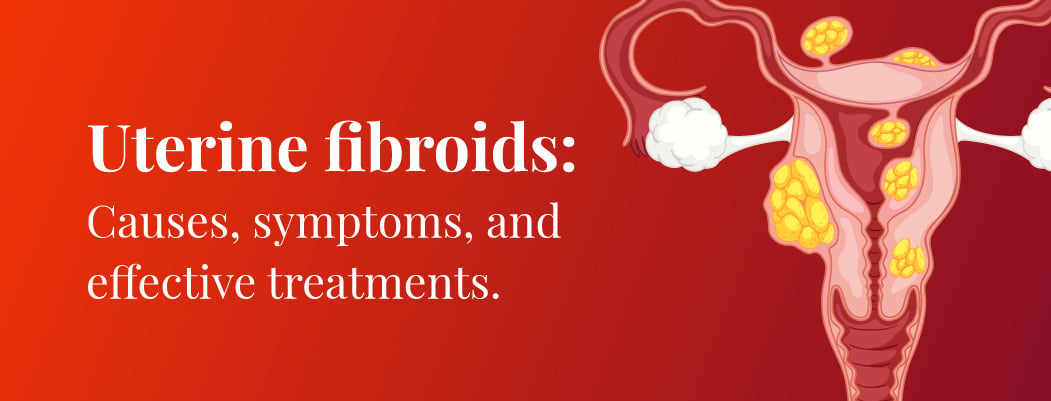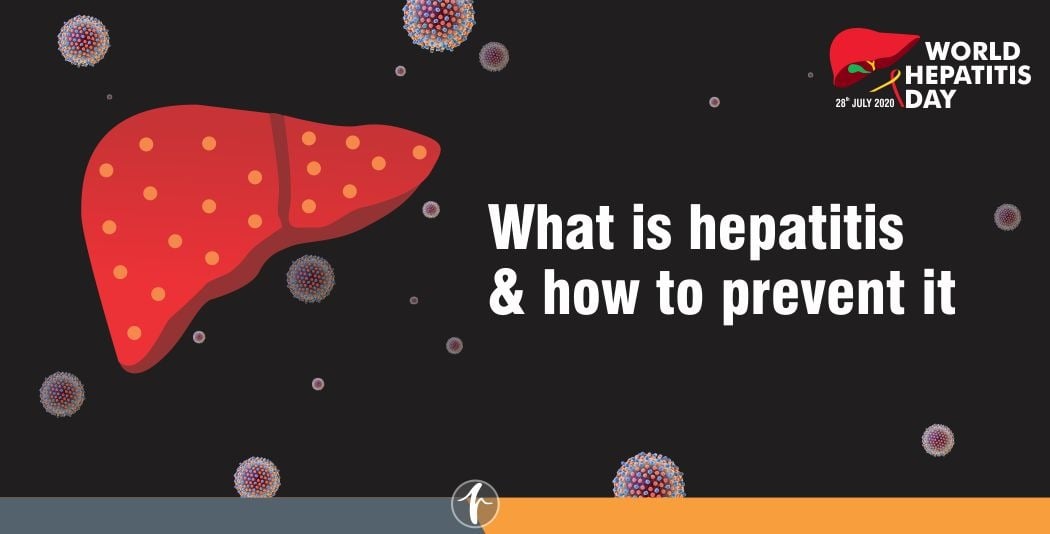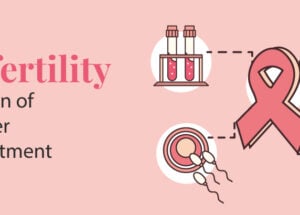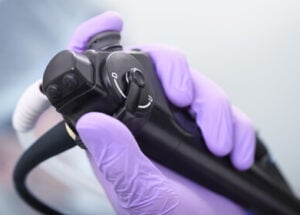What are Uterine Fibroids? Causes, Symptoms and Treatment
March 23, 2025

Uterine fibroids are abnormal muscular growths that develop in or on the uterus. Composed of muscle and connective tissue, these noncancerous tumors vary in size, shape, and location. Some fibroids are microscopic, while others grow large enough to distort the uterus.
Types
- Intramural Fibroids – The most common type, forming within the uterine wall and potentially stretching the womb.
- Subserosal Fibroids – Grow on the outer uterine layer (serosa), sometimes enlarging one side of the uterus.
- Pedunculated Fibroids – A type of subserosal fibroid that forms a stalk-like attachment to the uterus.
- Submucosal Fibroids – Develop in the middle muscular layer (myometrium) but are less common.
Causes
The exact cause remains unknown, but factors influencing their development include:
- Hormones – Estrogen and progesterone stimulate fibroid growth.
- Genetics – A family history increases the likelihood of developing fibroids.
- Pregnancy – Elevated hormone levels during pregnancy may trigger fibroid growth.
Risk Factors
Certain factors may increase the risk of fibroids, including:
- Age and race
- Early menstruation onset
- Use of birth control
- Vitamin D deficiency
- High red meat intake and low consumption of dairy, fruits, or vegetables
- Alcohol consumption
- Family history of fibroids
Symptoms
Symptoms vary based on size, location, and number of fibroids. Some women experience no symptoms, while others may notice:
- Heavy menstrual bleeding with clots
- Prolonged or painful periods
- Pelvic or lower back pain
- Frequent urination
- Abdominal pressure, bloating, or swelling
Fibroids often shrink after menopause due to declining estrogen and progesterone levels.
Diagnosis
You’ll need to see a gynecologist for a pelvic exam in order to receive an accurate diagnosis. This examination determines the health, dimensions, and shape of your uterus. You might additionally require the following tests:
- Ultrasound: An ultrasound creates images of your uterus on a screen using high-frequency sound waves. Your doctor can see the inside structures and any fibroids by doing this. Since the ultrasound wand is placed inside the vagina during a transvaginal ultrasound, it is closer to the uterus and may produce crisper images. Abdominal swelling or enlargement
- Lab test: Your doctor may recommend that you undergo blood testing to help determine the cause of your fibroids. Based on your complete blood count (CBC), they can determine whether you have anemia (low numbers of red blood cells) or other bleeding diseases.
- Magnetic resonance imaging (MRI): You might also undergo an MRI if, following an ultrasound, your doctor feels that more information is necessary. MRIs provide more precise images of fibroids and can aid doctors in selecting the most effective course of action. If you have a large uterus or are nearly at menopause, your doctor might also recommend getting an MRI.
- Hysterosonography: A technician widens your uterine cavity with saline during this examination. This enables them to see the uterine lining and submucosal fibroids that are enlarging into the uterus. When trying to conceive or if you experience heavy periods, this is helpful.
- Hysterosalpingography: You might undergo hysterosalpingography if your physician needs to determine whether your fallopian tubes are blocked. In order to better see your uterus and fallopian tubes on an X-ray, your doctor will apply dye to highlight them.
- Hysteroscopy: The doctor inserts a little telescope with a light attached to your cervix. They can next examine the walls of your uterus and the entrance of your fallopian tube after injecting saline and widening your uterine cavity.
Treatment
There are numerous treatment options for fibroids. Your age, the location of your fibroids, whether you wish to become pregnant, whether you are experiencing symptoms, and the best course of treatment for you will all determine your treatment.
Watchful waiting: Your doctor could advise you to wait it out if you just have minor symptoms or none at all. Fibroids can grow slowly or not at all and are not malignant. After menopause, they could also get smaller or disappear.
Natural and Home Remedies
The following natural cures and at-home remedies can be effective for fibroids:
- Acupuncture
- Yoga
- Massage
- Dietary adjustments can also be helpful.
Gui Zhi Fu Ling Tang (GFLT) is a traditional Chinese medicine recipe that uses heat to treat cramps (avoid heat if you encounter severe bleeding). Avoid meats and foods with many calories. Select instead green vegetables, green tea, and cold-water fish like tuna or salmon, which are rich in flavonoids.
Women with fibroids may also find it helpful to control their stress levels and lose weight if they are overweight.
Frequently Asked Questions
1. How serious are uterine fibroids?
Even though uterine fibroids are typically not harmful, they can be uncomfortable. They can sometimes result in complications, such as a decline in red blood cells (anemia), which results in exhaustion due to significant blood loss.
2. What are the symptoms of a fibroid in the uterus?
Symptoms of uterine fibroids include heavy menstrual bleeding, prolonged cycles lasting a week or more, and pelvic pressure or discomfort. Women may also experience frequent urination, difficulty emptying the bladder, constipation, and pain in the legs or lower back.
3. What happens if fibroids go untreated?
If left untreated, fibroids in the uterus tend to multiply and increase in size. The bleeding will intensify and become more painful, and it may also be accompanied by anemia and severe cramping. The abdomen may enlarge as the fibroids expand.
4. Who should you see for uterine fibroid concerns?
If you suspect or have been diagnosed with uterine fibroids, consult a gynecologist (OB/GYN) for proper evaluation, management, and treatment. As specialists in the female reproductive system, they can recommend medical or surgical interventions based on your condition.







